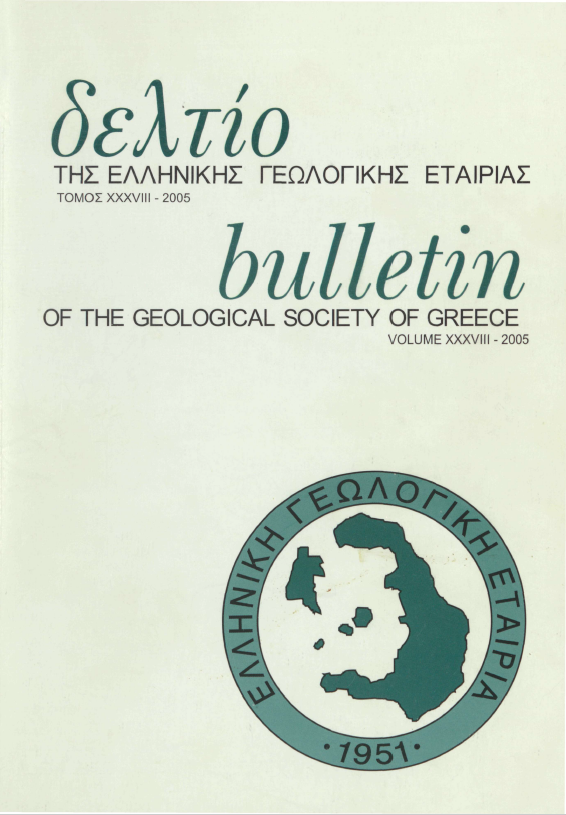THE FLOOD RISK FROM DIAKONIARIS RIVER IN URBAN AREA OF PATRAS, NW PELOPONNESE, GREECE.
Abstract
Natural hazards, on a national and international scale, have increased in the last years as a consequence of climatic changes and human activity resulting in an unfavourable impact on socioeconomic conditions. Catastrophic phenomena related to river floods or slopes instability are natural hazards originating from seismic, tectonic and volcanic activity, as well as, from erosional and meteorological events, and human intervention. The Vulnerability being particularly high in the regions intensely populated, like the analyzed case study, high is the Risk. The importance of geomorphological studies in assessing natural hazards due to river floods was brought into focus with recent floods event that occurred in the Patras urban area (NW Péloponnèse) and particular from Diakoniaris river. Diakoniaris river is about 11 Km long, with mouth in Patraikos gulf. His bed angle slope ranges from 17°degrees of the high basin to 1°degrees of his alluvial playing. Due to geological and geomorphological characteristics of his basin, Diakoniaris is a temporary river. During summer season it is completely dry, whereas in autumn and winter time discharge increases remarkably. The area of Patras has a mean annual rainfall ranging from 698,5 to 747.3 mm. It flows in E-W direction, traversing the Patras town. During the autumn and winter months intense rainfalls persisted for several hours producing severe flash flood mainly in the alluvial playing of Diakoniaris River. There were some loss of life and damage to buildings, transport infrastructure and agricultural crops. Similar events happened also in southwestern Patras town in 1997, October and 2001, December. The damages are mainly due to absence of good alluvial playing management practices in recent decades, concretely after the year 1960 during the urban growth of the Patras town.
Article Details
- How to Cite
-
ΣΤΑΜΑΤΟΠΟΥΛΟΣ Λ. (2005). THE FLOOD RISK FROM DIAKONIARIS RIVER IN URBAN AREA OF PATRAS, NW PELOPONNESE, GREECE. Bulletin of the Geological Society of Greece, 38, 69–76. https://doi.org/10.12681/bgsg.18426
- Section
- Geomorphology

This work is licensed under a Creative Commons Attribution-NonCommercial 4.0 International License.
Authors who publish with this journal agree to the following terms:
Authors retain copyright and grant the journal right of first publication with the work simultaneously licensed under a Creative Commons Attribution Non-Commercial License that allows others to share the work with an acknowledgement of the work's authorship and initial publication in this journal.
Authors are able to enter into separate, additional contractual arrangements for the non-exclusive distribution of the journal's published version of the work (e.g. post it to an institutional repository or publish it in a book), with an acknowledgement of its initial publication in this journal. Authors are permitted and encouraged to post their work online (preferably in institutional repositories or on their website) prior to and during the submission process, as it can lead to productive exchanges, as well as earlier and greater citation of published work.





